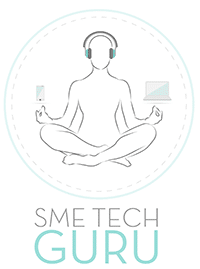By Marius Burger, CIO at SEACOM
In a fast-paced world where everything is constantly changing, education should also be transforming to keep up with evolving tech. Twenty-first-century jobs demand science, technology, engineering, and maths skills, as well as the capability to problem solve and think critically. There’s no denying the power of STEM education to empower our youth with the resources they need to thrive in the future, however, a fifth element – the arts – adds creative confidence and collaboration into the mix, opening even more doors for students.
Let’s further unpack the STEM vs STEAM debate, analysing their similarities and differences, and touching on how these schools of thought have become non-negotiables for our youth to unlock their full digital potential and help bring South Africa into the digital economy with sought-after skills.
The similarities and differences between STEM and STEAM education
Having taken global education by storm, STEM stands for science, technology, engineering and mathematics. Focusing on how these four disciplines overlap, STEM-based learning seeks to equip students with digital literacy and multidisciplinary knowledge to take on a career in the modern world.
On the other hand, STEAM represents STEM plus the arts, including humanities, language, social sciences, dance, drama, music, visual arts, design, and new media. Educators who advocate for STEAM believe that the arts are a key cog in an interdisciplinary, well-rounded education, and are necessary for creative thinking for the future.
Both approaches promote science-based learning to prepare students for a digitised workforce where jobs in these sectors are increasingly in demand. However, STEAM seeks to combine art and science to make new connections and discoveries. STEAM takes the same scientific concepts from STEM but uses the creative process to investigate them. This means that students in STEAM settings are able to connect concepts and solve problems in new, innovative ways.
Preparing future generations for the Fourth Industrial Revolution
Jobs in the Fourth Industrial Revolution (4IR) will require a 21st-century skillset that includes problem solving, creative confidence, critical thinking, innovation, and collaboration. Teaching these crucial capabilities in schools can help us grow a future-ready workforce that understands how to solve real-life problems and ask “what if”.
By weaving the arts into a STEM curriculum, endless opportunities and intersection points for career paths come to life. More students can engage creatively in their learning, make discoveries and connections between science and art, and walk away with a full range of future-proof skills. Integrating STEAM subjects is more representative of the world we live in.
In 2018, LinkedIn named creativity as “the most important skill in the world”, and the World Economic Forum placed it third out of 10 skills employees need to thrive in the 4IR, behind complex problem solving and critical thinking. The Forum’s The Future of Jobs report explains, “With the avalanche of new products, new technologies, and new ways of working, workers are going to have to become more creative to benefit from these changes.”
Creativity is also cited by Forbes as one of the 10 vital skills needed for the future of work and one of the most important job skills companies are currently looking for.
And with more AI-driven solutions being integrated into modern workplaces, creativity will be a crucial differentiator that will set humans apart from robots. American philosopher Sean Dorrance Kelly argues that AI can’t compete when it comes to human creativity: “Human creative achievement, because of the way it is socially embedded, will not succumb to advances in artificial intelligence.”
More so, many inventions illustrate that possessing creative skills is relevant to the fields of technology, engineering, and science. For example, without creativity, Nobel-prize-winning physicist Karl Ferdinand Braun would have never invented the first CRT (Cathode-Ray Tube) in 1897, and, as a result, you probably wouldn’t be able to read this article from a computer screen.
The verdict is out – creative skills are in for the future and will become essential to driving any business forward through innovation.
Modern learning and digital transformation
There are many global examples of how STEAM sparks a hunger for knowledge across disciplines and motivates children of all ages to seek new, creative solutions.
The University of Cambridge’s STE(A)M education research promotes the art of co-creating by asking professors and 12-year-olds to code together to create manipulated music. Similarly, the Mind over Music programme at the Phoenix Symphony in Arizona pairs musicians with teachers to empower students with an integration of music and STEM concepts. Results show that these students do significantly better in science and maths compared with students who aren’t part of the programme.
New Mexico’s innovative experiential learning centre Explora offers hundreds of interactive exhibits and activities in science, technology, engineering, art, and maths. This art-inclusive approach to STEM strengthens creativity and ingenuity in children. The Bay Area Discovery Museum in California combines design, art, and STEM in lessons and projects to encourage students to excel in various areas of learning, not only one or the other.
By challenging the misconception that children who are good at maths and science can’t possibly be artistic and creative, and vice versa, STEAM fuses the best of both worlds of learning, and enables a multifaceted, open-minded, and inclusive way of thinking about the world around us. And by supporting ICT skills development, both STEM and STEAM education propel digital transformation forward – incredibly important in our own country and continent.
Despite STEAM’s value of crafting digitally and technologically competent learners, according to local non-profit Arts and Ubuntu Trust, as little as 5% of South African schools provide art as a school-leaving subject. Something needs to change if we are to create a digitally competent workforce who can not only understand technical topics, but also apply creativity in innovative ways and reshape our future.


